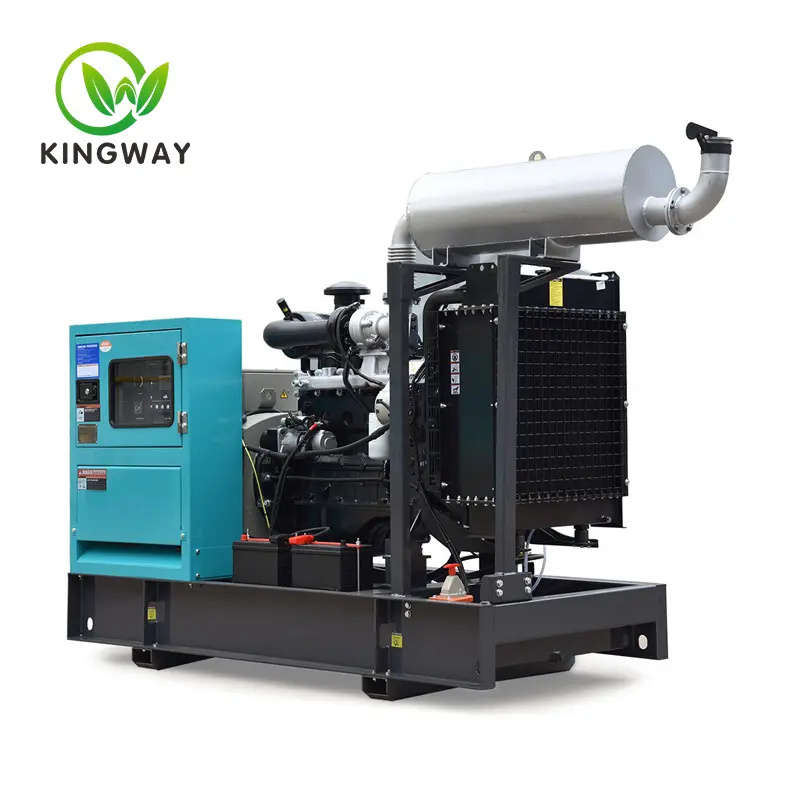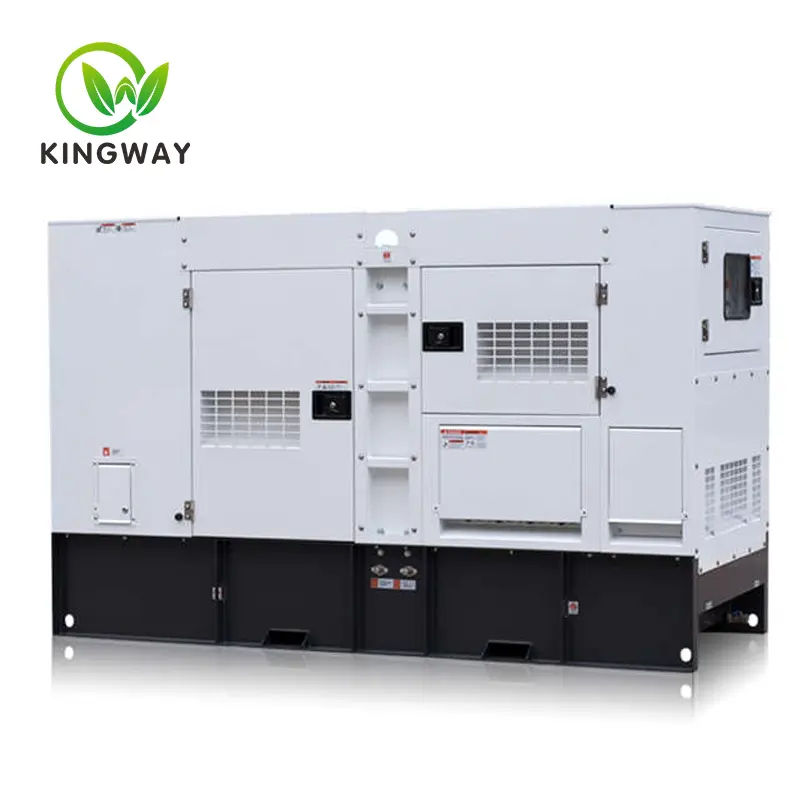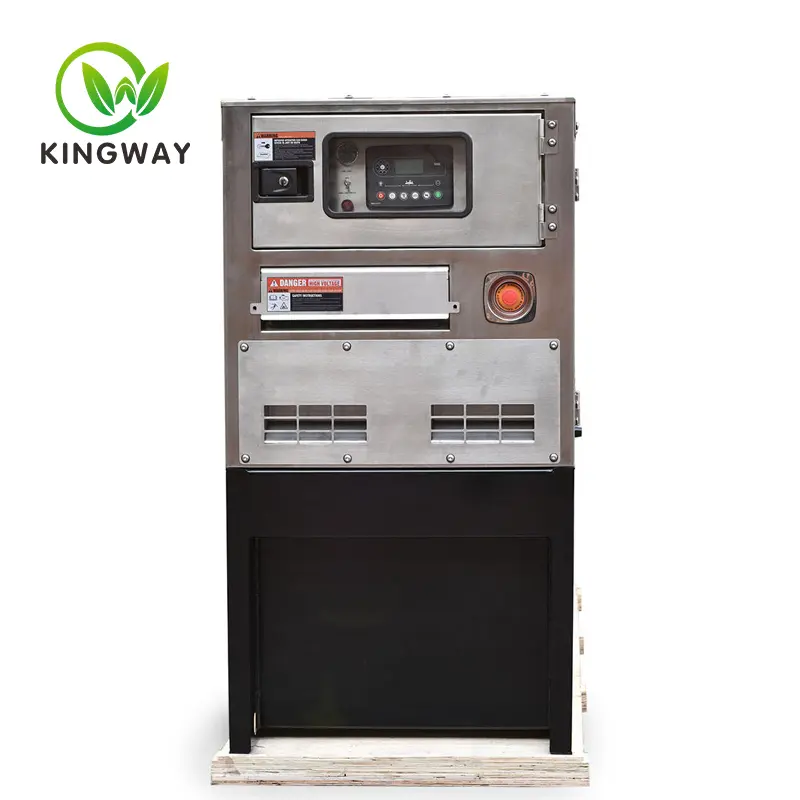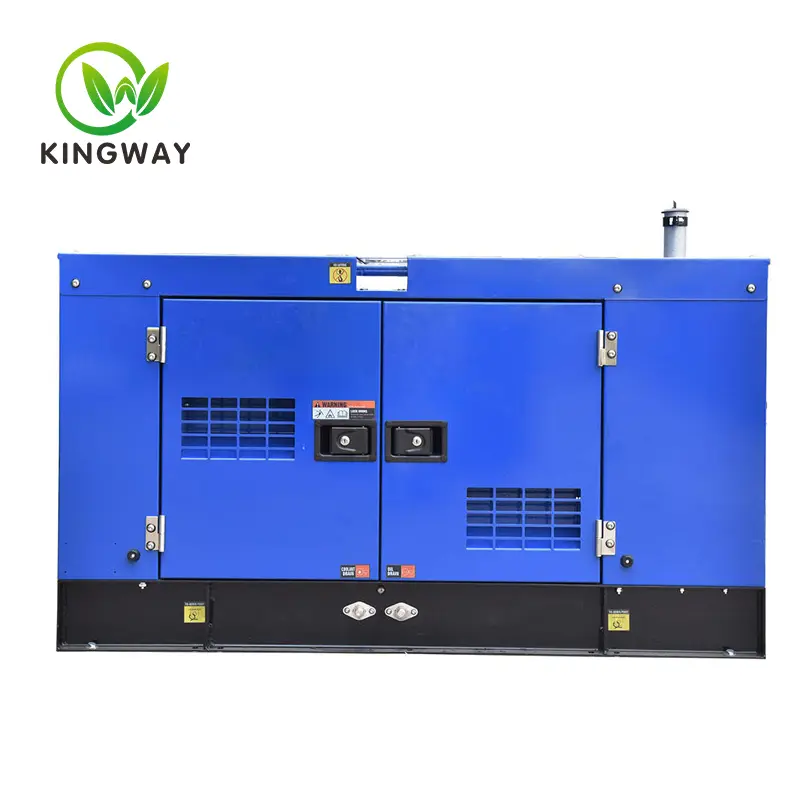Summary of diesel generator oil pressure knowledge
Summary of diesel generator oil pressure knowledge

What is the normal oil pressure of diesel generator set?
In the daily maintenance and operation of diesel generator sets, oil pressure is a crucial indicator. It is directly related to the lubrication effect and operating conditions inside the engine. So, what is the normal oil pressure of a diesel generator set? This article will give you detailed answers.
Normal range of oil pressure of diesel generator set
First of all, we need to make it clear: the normal range of oil pressure may be different for different models and brands of diesel generator sets. But generally speaking, the oil pressure of most diesel generator sets should be maintained within a certain range during normal operation.
Specifically, when the diesel generator set is in normal working condition, its oil pressure should usually be between 600kPa and 1000kPa. This range is set based on the operating characteristics and lubrication requirements of the diesel engine to ensure that all internal components of the engine are fully lubricated and cooled.
In addition, it is worth noting that in the early stages of starting the diesel generator set, the oil pressure may be slightly low because the oil has not yet been fully warmed up and circulated. However, as the engine temperature increases and the oil circulates, the oil pressure will gradually increase and stabilize within the normal range.
Judgment and troubleshooting of abnormal diesel engine oil pressure faults

Due to parts wear, improper assembly or other faults of the oil engine, the oil pressure will be too low or there will be no pressure; the oil pressure will be too high or the pressure gauge pointer will swing. As a result, it may cause accidents in the use of construction machinery and cause unnecessary losses.
Core tip: Judgment and troubleshooting of abnormal diesel engine oil pressure faults: Diesel engines may cause low or no oil pressure due to parts wear, improper assembly or other faults; excessive oil pressure or swinging of the pressure gauge pointer and other faults. This may lead to accidents in the use of construction machinery and unnecessary losses.
Diesel engines due to wear of parts, improper assembly or other faults will cause the oil pressure to be too low or no pressure; the oil pressure to be too high or the pressure gauge pointer to swing, etc. This may lead to accidents in the use of construction machinery and unnecessary losses.
- Oil pressure too low
When it is found that the pressure indicated by the oil pressure gauge is lower than the normal value (0.15-0.4 MPa), the machine should be stopped immediately. After waiting for 3-5 minutes, pull out the dipstick to check the quality and quantity of the engine oil. If the amount of oil is insufficient, add more; if the viscosity of the engine oil is small, the oil level rises and there is a smell of raw oil, it means that the oil is mixed with fuel; if the color of the oil is milky white, it means that the oil is mixed with water, and it should be checked. Check and eliminate oil leakage or water leakage, and replace the engine oil as required if necessary. When the engine oil meets the requirements of this type of diesel engine and the quantity is sufficient, loosen the main oil gallery plug and rotate the crankshaft. If there is too much oil, it may be that the fitting clearance of the main bearing, connecting rod bearing, camshaft bearing, etc. is too large. , the bearing clearance should be checked and adjusted; if there is little oil output, it may be that the coarse filter is clogged, the pressure limiting valve is leaking oil, or it is improperly adjusted. At this time, the coarse filter should be cleaned or the pressure limiting valve should be checked and adjusted. The adjustment of the pressure limiting valve should be carried out on the experimental bench, and generally it is not allowed to be adjusted at will. In addition, if the oil pump is severely worn or the seal is damaged, causing the oil pump to not pump oil, it will also cause the oil pressure to be too low. At this time, the oil pump needs to be inspected and repaired. If there are no abnormalities after the above inspections, it means that the oil pressure gauge is malfunctioning, and a new oil pressure gauge needs to be replaced.
2. No oil pressure
During the operation of construction machinery, if the oil indicator light comes on and the oil pressure gauge pointer points to 0, the machine should be stopped immediately and turned off. Then, check whether the oil pipe leaks a lot of oil due to sudden rupture; if there is no large amount of oil leakage on the outside of the engine, loosen the pipe joint of the oil pressure gauge. If oil rushes out quickly, the oil pressure gauge is damaged. Since the oil filter is installed on the cylinder block, it usually has a paper pad. If the paper pad is installed incorrectly or the oil inlet hole is connected to the national oil hole, the oil cannot enter the main oil passage. This situation is quite serious. This is especially dangerous for diesel engines that have just been overhauled. If no abnormality is found through the above inspection, it means that the fault may be in the oil pump, and the oil pump needs to be inspected and repaired.
- Oil pressure too high
In winter, you will find that the oil pressure is high just after starting the diesel engine. After preheating, the oil pressure will drop to the normal value. If the indicated value of the oil pressure gauge still exceeds the normal value, the pressure limiting valve should be adjusted to meet the specified value. After the test run, if the oil pressure is still high, you need to check the grade of the oil to see if the oil viscosity is too high; if the oil viscosity is not high, the lubricating oil channel may be clogged, and clean diesel should be used for cleaning. Since diesel has poor lubrication, you can use the starter to rotate the crankshaft for 3-4 minutes during cleaning (note, never start the engine). If the engine must be started for cleaning, 2/3 washing oil and 1/3 engine oil can be mixed and then cleaned, and the time should not exceed 3 minutes.
- The oil pressure gauge needle swings back and forth
After starting the diesel engine, if you find that the oil pressure gauge pointer swings back and forth, you should first pull out the dipstick to check whether the engine oil is sufficient. If it is insufficient, add qualified engine oil according to the standard; if the engine oil is sufficient, check the bypass valve. If the bypass valve spring is deformed or has insufficient elasticity, the bypass valve spring should be replaced; if the bypass valve is not closed tightly, the bypass valve should be repaired.
How to solve low oil pressure of diesel generator set
Analysis of causes of low oil pressure failure:

①The oil pressure gauge is inaccurate and the sensor is faulty.
② If diesel or water enters the engine oil, its viscosity is too low.
③The pressure regulating valve is incorrectly adjusted, causing more oil leakage.
④The newly assembled oil filter does not meet the quality requirements.
⑤The oil filter is clogged with dirt, causing too much resistance to oil flow.
⑥There is too little oil in the oil pan and cannot meet the minimum requirements for oil circulation.
⑦The oil suction pan filter or cooler is clogged, preventing internal heat from dissipating, causing the oil temperature to be high.
⑧The gaps at the main bearings, connecting rod bearings and other lubricating surfaces in the body are too large, causing increased oil leakage and lowering the oil pressure.
One or more of the above fault causes can cause the oil pressure to decrease after the diesel engine is started.
Low oil pressure troubleshooting methods:
When troubleshooting this type of fault, maintenance personnel or operators must understand the working principles and composition of each component of the entire diesel engine's oil pipeline and oil pump.
① Pull out the oil dipstick in the diesel engine oil pan and check the oil quality, but no thinning of the oil is found (can be detected with the help of a testing instrument or test paper).
② Adjust the oil pressure limiting valve, but no matter how you adjust the oil pressure, it still cannot be increased, and it cannot meet the minimum oil pressure requirement when the diesel engine is running.
③Replace the oil pressure gauge and sensor with the same model, start the diesel engine to idle speed and gradually increase it to the rated speed. It is observed that the display of the oil pressure gauge still does not meet the requirements.
④Drain the oil in the oil casing, open the side cover of the engine body, and check the filter of the oil suction pan. It is found that 9/10 of the filter of the oil suction pan is blocked. Remove debris adsorbed on the filter,
Assemble the filter and the side cover of the engine body, add engine oil, start the diesel engine to the rated speed, and when the oil pressure returns to normal, the fault is eliminated.
How to maintain normal oil pressure
Change engine oil and oil filter regularly
Regular oil and oil filter changes are key measures to maintain normal oil pressure. It is generally recommended to replace the diesel generator according to the recommended cycle by the diesel generator manufacturer to ensure the cleanliness and lubrication performance of the engine oil.
2 Regularly check the oil lines and seals
Regularly check whether the oil pipelines and seals are intact. If there is any damage or leakage, repair or replace it in time to avoid abnormal oil pressure.
- Reasonable use of diesel generators
Proper use of diesel generators is also an important measure to maintain normal oil pressure. Avoid improper operating methods such as long-term high-load operation and frequent starts and stops to reduce wear and damage to the engine.
What is the oil pressure switch in a diesel generator and how does it work?
The oil pressure switch, as the name suggests, monitors the oil pressure of the diesel engine. This switch can usually be found on the engine block and can be found in either of two states - on or off.
When the oil pressure is low, it can be found that the switch is closed to ground when it fails. On the other hand, if the oil pressure is higher than the minimum requirement, the switch is open.
The minimum oil pressure requirements at which a diesel engine should shut down are determined and set by the engine manufacturer to help prevent any problems or catastrophic failure of the diesel engine.
Do you know? Many times, it is the diesel engine manufacturer who supplies the oil pressure switch.
Oil pressure switch-Application
In most cases, the oil pressure switch is used to ensure that the diesel engine is not running before starting. Here, the switch needs to be in its default state, which is grounded. Operators check that the switch is in this rest position before starting the engine to avoid engaging the starter motor when the engine is already running, as this could cause starter failure.
Once again, the oil pressure sensor also doubles as an actuator. Here, once the oil pressure in the diesel engine drops below a preset critical level, it activates the oil warning light on the dashboard. This timely signal from the oil pressure gauge helps prevent any major damage to the engine.
Although it may vary depending on the overall structure of the engine, the oil pressure sensor is usually located in a common area, such as the engine's cylinder block or the oil filter housing. In some cases, the oil pressure gauge can be located on the engine head.
The working principle of oil pressure switch
In most cases, oil pressure sensors operate via a self-elastic diaphragm, also known as a movable diaphragm with a hairspring. The position of this diaphragm is a direct result of the pressure exerted on it, which is why each diesel generator OEM assigns a different oil pressure threshold to each engine, usually in the range of 3.5 to 11 psi.
When the oil pressure falls below a critical value, the oil pressure sensor activates a warning light or simply returns a signal to the ECU. This helps alert the operator in time to prevent any damage to the engine.
In a switch with a normally open contact, the contact is activated when the oil pressure in the engine reaches a specified critical level. This facilitates movement of the diaphragm, causing the contacts to connect together, thus placing the switch in the off position.
On the other hand, in a switch with a normally closed contact, the contact is deactivated when the oil pressure in the engine reaches a specified critical level. This facilitates the movement of the diaphragm, causing the already connected contacts to now open together, thus placing the switch in the open position.
As with critical oil pressure, engine type, power, and construction may vary depending on the manufacturer and the needs of the associated engine.
Diagnostic and testing procedures for oil pressure switches
Case 1 – Switch with normally open contact
In this case, check whether there is an open circuit between the contacts when the engine is not running.
Next, check for a short circuit (continuity) between the contacts while the engine is running.
Finally, pins, terminals, and wires need to be checked for continuity and condition.
Case 2 – Switch with normally closed contacts
In this case, check whether there is a short circuit (continuity) between the contacts when the engine is not running.
Next, attention should be paid to whether there is an open circuit between the contacts when the engine is running.
Finally, pins, terminals, and wires must be checked for continuity and condition.
Use a multimeter to test the oil pressure switch
In order to test the oil pressure switch using a multimeter, the following steps must be followed:
First unplug the connector from the oil pressure switch and check the connectivity between the contacts. If the switch has two pins, the check should be between the pins. If the switch has only one pin, the check should be between the pin and the mass (negative).
When the ignition switch is not turned on, the resistance reading of the multimeter should be infinity (contacts open - closed) for switches with normally open contacts, and infinity for switches with normally closed contacts. Zero (contact connected – ON).
When the engine is running, the resistance reading of the multimeter should be zero for switches with normally open contacts (contacts connected - connected) and infinity for switches with normally closed contacts (contacts disconnected - closed).
However, you should not worry too much about this aspect, especially if you purchase a diesel generator from Alibaba, which will ensure that the diesel generator has undergone rigorous inspection and testing to ensure that the diesel generator set has no problems before it is delivered for installation.
Frequently asked questions about oil pressure switches

What is the procedure for checking the oil pressure switch?
One of the easiest ways to test an oil pressure switch is to connect a multimeter between the pins and the body of the transmitter. The switch should be in the off position when the engine is off and on when the engine is running.
In short, the normal range of diesel generator oil pressure is crucial to ensure the normal operation of the engine. By regularly inspecting and maintaining the oil system, we can ensure that your diesel generator is always in top condition.










